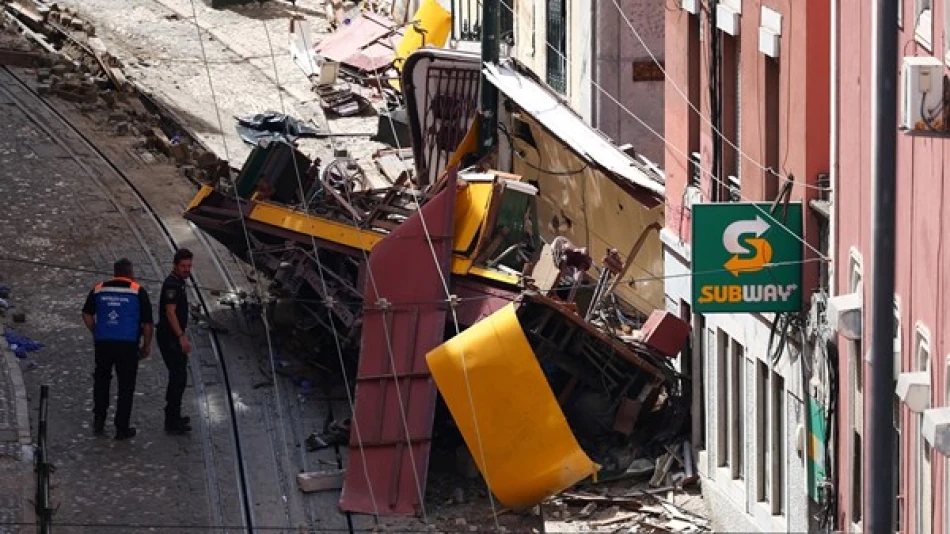
Unraveling the Cause: Lisbon Tram Accident Uncovered
Cable Failure Behind Deadly Lisbon Tram Crash That Killed 16, Despite Morning Safety Check
Portuguese investigators have determined that a cable break between two carriages caused this week's fatal tram derailment in Lisbon that killed at least 16 people, raising serious questions about inspection protocols after a visual safety check conducted the same morning failed to detect any problems. The tragedy highlights the vulnerability of aging urban transport systems that serve millions of tourists annually.
The Accident: Tourist Favorite Turns Deadly
The historic "Gloria" funicular tram, a beloved fixture connecting Avenida da Liberdade to the scenic São Pedro de Alcântara hill overlooking Lisbon, derailed and crashed into a building Wednesday evening around 6 PM local time. The century-old tramline, heavily used by tourists seeking panoramic views of Portugal's capital, became the scene of one of the city's worst public transport disasters in recent memory.
Portuguese authorities have launched a judicial investigation into the incident, with the Portuguese Office for Investigation of Aviation and Railway Accidents leading the technical inquiry.
Critical Safety Gap Exposed
The most troubling aspect of the investigation centers on a fundamental failure in safety protocols. Investigators revealed that while a cable connecting the two carriages had severed—directly causing the fatal derailment—a routine visual inspection conducted on the morning of the accident detected "no defects" according to the official statement.
This raises uncomfortable questions about the adequacy of visual inspections for critical safety components. Cable systems under constant tension and load require sophisticated monitoring beyond what human eyes can detect, particularly for infrastructure that may be decades old.
Tourism Infrastructure Under Scrutiny
Lisbon's historic tram network, including funiculars like the Gloria line, represents both the city's charm and its infrastructure challenges. These systems, some dating back over 100 years, carry enormous tourist loads while operating on aging mechanical systems that require increasingly intensive maintenance.
The Gloria funicular specifically serves one of Lisbon's most popular tourist routes, ferrying visitors from the main shopping district to elevated viewpoints. The accident occurred during peak tourist season, likely contributing to the high casualty count.
Broader Implications for Historic Transit Systems
This incident reflects a growing challenge faced by European cities with heritage transport systems. Similar concerns have emerged in cities like San Francisco with its cable cars, Istanbul with its historic funiculars, and other Portuguese cities operating vintage tram networks.
The balance between preserving tourist-attracting historic character and ensuring modern safety standards has become increasingly complex as visitor numbers surge and infrastructure ages. Cities typically face enormous costs to retrofit century-old systems with contemporary safety technology while maintaining their historic appeal.
Economic and Regulatory Consequences
Beyond the human tragedy, this accident will likely trigger comprehensive reviews of Portugal's urban rail safety protocols and potentially impact Lisbon's crucial tourism sector. The city's historic trams are featured prominently in tourism marketing, and safety concerns could affect visitor confidence.
Insurance and liability costs for heritage transport operators across Europe may increase as regulators examine whether current inspection standards adequately address the unique risks of operating vintage mechanical systems at modern capacity levels.
The investigation's findings will likely influence safety regulations not just in Portugal, but across the European Union, where similar historic transport systems operate in major tourist destinations. The gap between morning inspection and evening failure suggests that continuous monitoring systems, rather than periodic visual checks, may become mandatory for critical safety components in heritage rail systems.
Most Viewed News

 Layla Al Mansoori
Layla Al Mansoori






